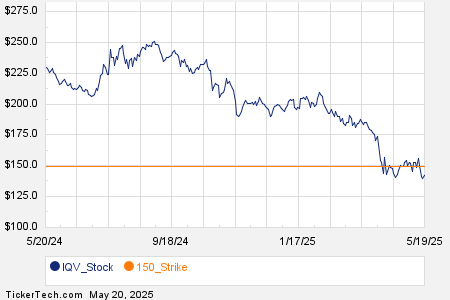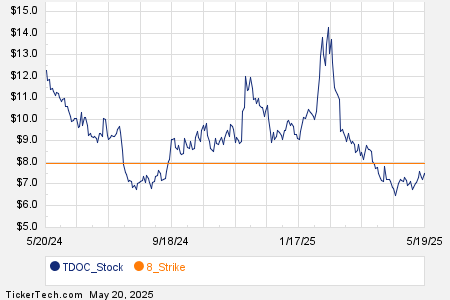Global Coffee Prices Decline Amid Increased Supply Forecasts
July arabica coffee (KCN25) is currently down -3.80 (-1.01%), while July ICE robusta coffee (RMN25) has dropped -57 (-1.15%).
Supply Outlook Weighs on Coffee Prices
Today’s coffee prices are under pressure due to expectations of larger global supplies. This past Monday, the USDA’s Foreign Agriculture Service (FAS) projected that Brazil’s 2025/26 coffee production will increase by 0.5% year-over-year (y/y) to 65 million bags. Furthermore, Vietnam’s coffee output for the same period is expected to rise by 6.9% y/y to 31 million bags. Brazil is historically the world’s largest producer of arabica coffee, while Vietnam leads in robusta coffee production.
Inventory Increases Indicate Potential Price Declines
Rising ICE coffee inventories further add downward pressure on prices. Robust coffee inventories monitored by ICE have reached an 8-month high of 5,211 lots. Additionally, ICE-monitored arabica coffee inventories increased to a 3-1/4 month high of 858,534 bags.
Reports from Safras Mercado indicate that Brazil’s 2024/25 coffee sales are 97% completed as of May 13, up from 94% at the same time last year, suggesting an upswing in supply.
Weather Concerns Offer Some Price Support
Despite the overall bearish sentiment, losses in coffee prices are somewhat limited due to concerns about adverse weather in Brazil, which might impact coffee crop yields. Somar Meteorologia noted that Brazil’s primary arabica coffee growing area, Minas Gerais, received only 2.5 mm of rain in the week ending May 17, representing just 12% of the historical average.
Export Trends Affect Market Sentiment
Declines in Brazilian coffee exports are offering some support to prices. Last Monday, Cecafe reported that April’s green coffee exports fell by 28% y/y to 3.05 million bags, while total exports from January to April decreased by 15.5% y/y to 13.186 million bags.
Production Forecasts Impacting Market Dynamics
Last Thursday, arabica coffee reached a 3-week low as evidence of larger global supplies continued to emerge. The USDA forecast on May 9 indicated that Honduras, Central America’s largest coffee producer, was likely to increase its coffee production by 5.1% y/y to 5.8 million bags. Consulting firm Safras & Mercado revised its Brazil 2025/26 production estimate upward to 65.51 million bags from 62.45 million bags. Additionally, Conab updated its Brazil 2025 production estimate to 55.7 million bags, up from a previous estimate of 51.81 million bags.
Concerns about demand are also casting a shadow over coffee prices. Major commodity importers, including Starbucks and Hershey, have indicated that the U.S.’s baseline 10% tariff on imports could lead to increased prices and lower sales volumes.
Regional Production Challenges for Robusta
In contrast, the robusta market sees some support from a decrease in production due to drought conditions in Vietnam. The country’s coffee output for the 2023/24 crop year is expected to fall by 20% to 1.472 million metric tons (MMT), marking the smallest crop in four years. The General Statistics Office reported a 17.1% y/y drop in 2024 coffee exports to 1.35 MMT. Furthermore, the National Statistics Office of Vietnam noted a 9.8% y/y decline in January-April 2025 coffee exports to 663,000 metric tons. The Vietnam Coffee and Cocoa Association has lowered its production estimate for 2024/25 to 26.5 million bags from 28 million bags.
Conversely, Rabobank is forecasting that Brazil’s 2025/26 robusta coffee crop will increase by 7.3% y/y to a record 24.7 million bags.
USDA’s Mixed Outlook for Coffee Prices
The USDA’s biannual report, due on December 18, presents a mixed case for coffee prices. The FAS anticipates a 4.0% y/y rise in world coffee production for 2024/25, increasing to 174.855 million bags, with arabica production rising by 1.5% to 97.845 million bags and robusta by 7.5% to 77.01 million bags. Ending stocks are projected to fall by 6.6% to a 25-year low of 20.867 million bags from 22.347 million bags in 2023/24. Earlier estimates for Brazilian coffee production had also been adjusted downwards to 66.4 million metric tons.
For the 2025/26 marketing year, Volcafe recently reduced its Brazil arabica coffee production estimate to 34.4 million bags, approximately 11 million bags lower than a previous estimate made in September, reflecting the impact of a severe drought. Volcafe expects a global arabica coffee deficit of 8.5 million bags, wider than the 5.5 million bag deficit projected for 2024/25, marking the fifth consecutive year of deficits.
On the date of publication,
Rich Asplund
did not have (either directly or indirectly) positions in any of the securities mentioned in this article. All information and data in this article is solely for informational purposes. For more information please view the Barchart Disclosure Policy.
More news from Barchart
The views and opinions expressed herein are the views and opinions of the author and do not necessarily reflect those of Nasdaq, Inc.



